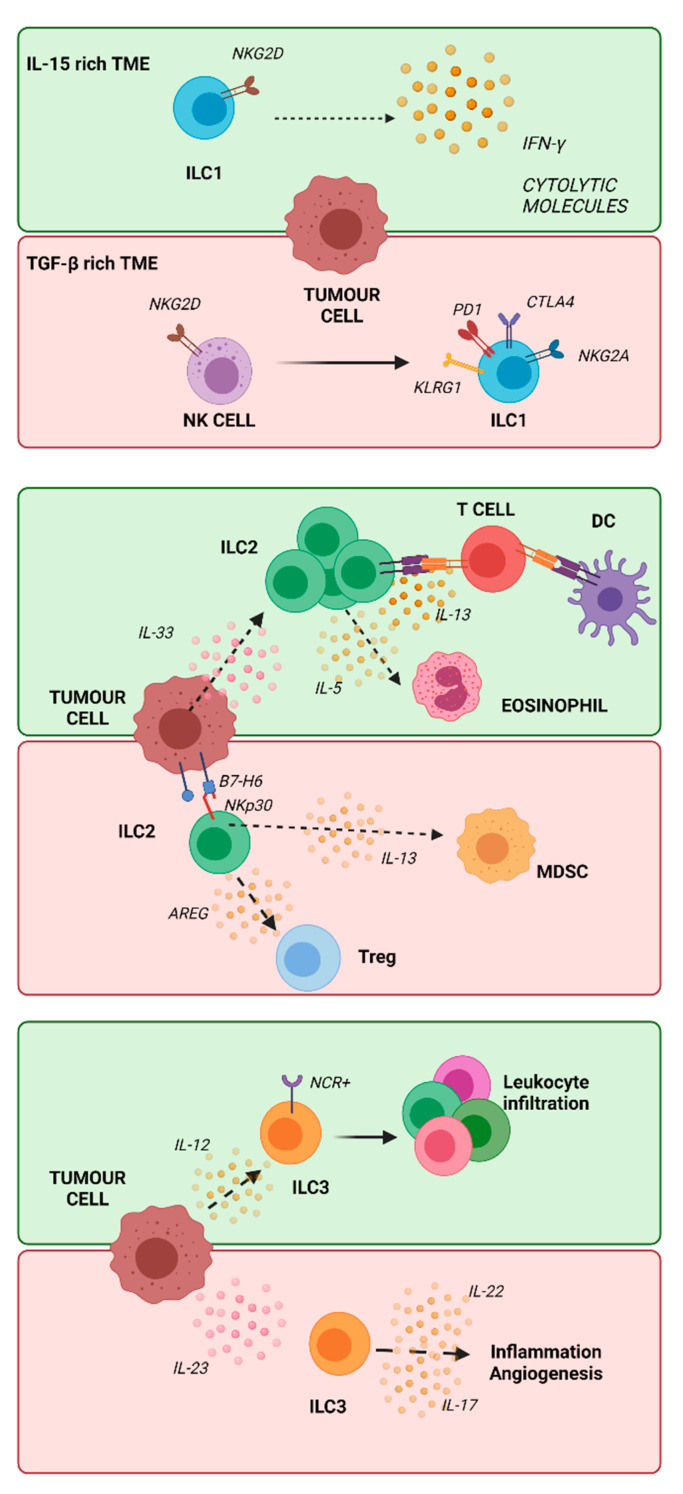Figure 1.
Helper ILCs and their role in cancer development/regression. The illustration summarizes the different roles of helper ILCs in cancer. In green, it has been reported how ILC1s, ILC2s or ILC3s could be helpful in terms of cancer control; in red, how they can be harmful and support cancer progression or promotion. Some of the pathways represented in this illustration were described in Crinier et al., 2019 [89]. In an IL-15-rich TME, ILC1s can produce lytic molecules, contributing to tumor cell elimination. However, TGF-β causes a transition from NK cells to ILC1s, which are less cytotoxic; this mechanism may sustain tumor growth/progression. Considering ILC2s, they can help tumor regression by recruiting T cells and eosinophils; on the other side, through IL-13 production, they can recruit MDSCs and through AREG and Tregs they contribute to the establishment of an immune-suppressive environment. ILC3s can contribute to tumor regression by inducing leukocyte infiltration through IL-12 release; on the other hand, they can exert a pro-tumor role through the production of IL-17/IL-22 under the influence of IL-23 produced by the tumor. (Created with BioRender.com).

